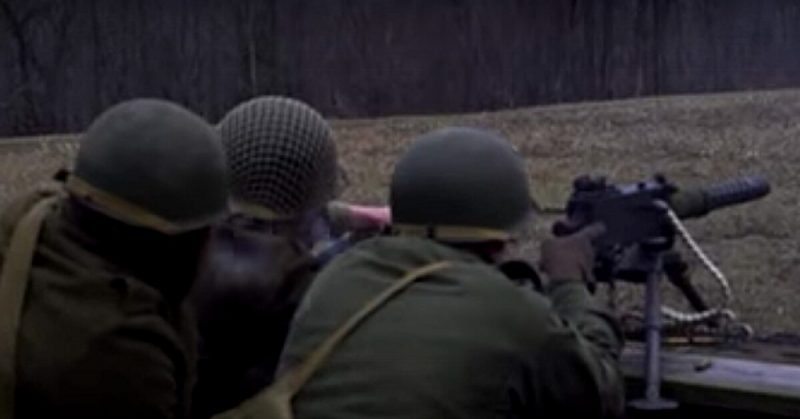War History Online presents this Guest Article by Miles V. (The Firearm Blog)
The Firearm Blog TV is a Youtube subsidiary of The Firearm Blog, an online resource dedicated to firearms news and information. Departing from our usual videos on Youtube, we undertook a historical experiment to try and recreate what a squad of American Paratroopers would have gone through in a textbook Live Fire attack, using all WW II small arms and live ammunition. We set up an organizationally correct Parachute Infantry squad consisting of a number of Reenactors and Marine Infantrymen both currently serving and prior service.
Thereafter we conducted a maneuver range utilizing the M1 Garands, M1A1 Carbines, and 1919A4 Light Machine Guns that a squad in 1944 would have been armed with. Initially, the squad took fire, the MG section deployed in a support role with the maneuver element returning fire. The maneuver element pushed up to assault the objective of steel targets signaled by a rifle grenade shot from an M1903 rifle. Once the objective at 100 meters was overtaken, we simulated receiving fire at 500 meters and the MG team had to be pushed up to begin support while taking a simulated casualty.
Throughout this exercise, our objective was to learn the various nuances that American soldiers in the Second World War would have had to deal with and overcome. We learned that various myths around the M1 Garand turned out to be false in the heat of battle, specifically the “M1 Thumb”, and the “Ping” of an expended clip letting an enemy know that the squad was out of ammunition.
We learned that the tactical small unit fundamentals of fire and maneuver through a system of Support, Assault, and Security were just as important in the Second World War as they are in today’s Infantry across the world. Such topics as properly employing the machine guns as a base of fire and engaging targets at multiple distances were also addressed.
Planning for this event and taking it through on range day was an exhaustive process. For starters, it was all volunteer run and led, from the participants to the photographers. Dealing with volunteers presented some issues such as several folks canceling at the last minute. Sourcing the small arms and ammunition was another logistical issue that had to be taken into account.
On the actual range day itself the problems continued. Camera batteries drained quickly in the cold, the plastic targets that we had mounted to the steel plates for recording hit ratios were all shot off within the first several minutes. Safety was another very important consideration wherein we had to go over angles of fire throughout numerous dry runs and range walkthroughs. We found out that soldiers in the Second World War probably never engaged their safeties because doing so would risk a negligent discharge in between running from positions. So essentially we had to run the entire Live Fire portion with the M1 Garands on Fire the entire time.
But at the conclusion of the event, with no actual casualties incurred, we were extremely happy with the results. We tried our best to recreate a Second World War textbook Live Fire and I think we succeeded in as many regards we could. We hope you enjoy our resulting footage and are able to acquire some knowledge that would be very difficult in shooting these small arms on a square range individually or watching blank firing rifles in movies. Check us out at The Firearm Blog
Author: Miles V.
